Mexico - Southern Endemics & more!
Monday 21st April – Thursday 8th May 2014
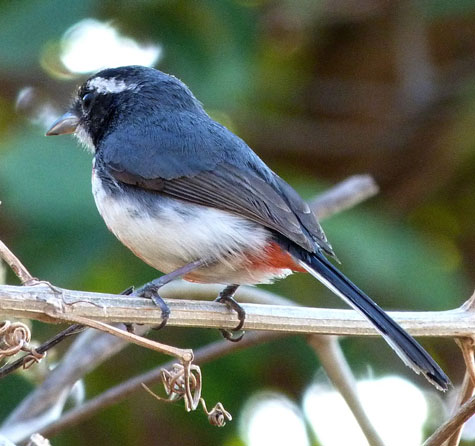 Our second very select tour, this time to Southern Mexico will make for a very elite experience. Our local guide Dave has lived in Mexico for the last 18 years and is an expert at finding the sought after species that we too will be seeking during this spectacular tour. Dave's expertise and local knowledge will make this a very safe and very exciting tour where we will concentrate on finding many of the areas key endemic species alongside many other sought after specialities. From the start at Veracruz we will head toward Oaxaca where some of our targets include Sumichrast’s Wren, Bumblebee Hummingbird, Mexican Sheartail, Bearded Wood-Partridge and the endemic Strickland’s Woodpecker. Moving on through mountain tops and pine forests we will pass through the Isthmus to arrive at Chiapas. Visiting a wide variety of habitats and experiencing several superb boat trips we are sure to amass a wonderful list including such sought after species as Pink-headed Warbler, Red-breasted Chat, Yucatan Jay, Bearded Screech-Owl and the superb Rosita’s Bunting. As well as the wealth of superb birds to be found on this trip we also have the chance to visit several of the very best Mayan ruins in the world making a fitting finale to our wonderful trip into Southern Mexico.
Our second very select tour, this time to Southern Mexico will make for a very elite experience. Our local guide Dave has lived in Mexico for the last 18 years and is an expert at finding the sought after species that we too will be seeking during this spectacular tour. Dave's expertise and local knowledge will make this a very safe and very exciting tour where we will concentrate on finding many of the areas key endemic species alongside many other sought after specialities. From the start at Veracruz we will head toward Oaxaca where some of our targets include Sumichrast’s Wren, Bumblebee Hummingbird, Mexican Sheartail, Bearded Wood-Partridge and the endemic Strickland’s Woodpecker. Moving on through mountain tops and pine forests we will pass through the Isthmus to arrive at Chiapas. Visiting a wide variety of habitats and experiencing several superb boat trips we are sure to amass a wonderful list including such sought after species as Pink-headed Warbler, Red-breasted Chat, Yucatan Jay, Bearded Screech-Owl and the superb Rosita’s Bunting. As well as the wealth of superb birds to be found on this trip we also have the chance to visit several of the very best Mayan ruins in the world making a fitting finale to our wonderful trip into Southern Mexico.
|
|
Depending where you travel from most people will set off today on an overnight flight to Mexico City and on to Veracruz, where we expect a morning arrival the following day 22nd April
Day 2 Xalapa, Veracruz - 22nd April
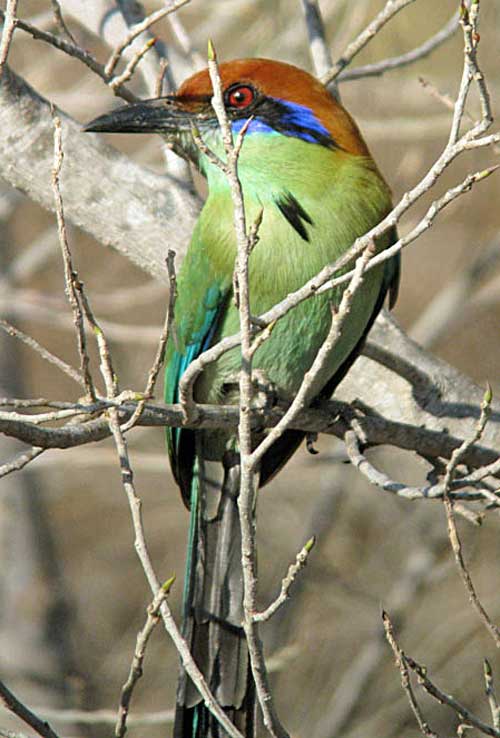 This morning we will take an hour drive, where our first morning in the field will take us to a variety of habitats, beginning with a foray into some interesting Limestone Karst hills where we will have our first chance to find the very localized Sumichrast’s Wren. Much of this area has been spared the chainsaw and is utilized for shade grown coffee, unlike a lot of the foothills of Veracruz that have been cleared for sun grown coffee and are a virtual desert for birds. Other birds of interest in the area include, Singing Quail, Wedge-tailed Sabrewing, White-bellied Emerald, Gartered Trogon, numerous warblers including Fan-tailed and Rufous-capped. After lunch we will head to some areas of remnant coastal thorn forest north of the city of Veracruz. Some of the birds we will be watching for include the endemic Mexican Sheartail, Canivet’s Emerald, White-bellied Wren, and Yellow-winged Tanager (there is also an isolated and distinctly smaller subspecies of Rufous-napped Wren here (split?). Other possible stops will include low laying mangrove habitats where we may encounter large flocks of migrant passerines and water birds making their way north. Night in Xalapa, Veracruz.
This morning we will take an hour drive, where our first morning in the field will take us to a variety of habitats, beginning with a foray into some interesting Limestone Karst hills where we will have our first chance to find the very localized Sumichrast’s Wren. Much of this area has been spared the chainsaw and is utilized for shade grown coffee, unlike a lot of the foothills of Veracruz that have been cleared for sun grown coffee and are a virtual desert for birds. Other birds of interest in the area include, Singing Quail, Wedge-tailed Sabrewing, White-bellied Emerald, Gartered Trogon, numerous warblers including Fan-tailed and Rufous-capped. After lunch we will head to some areas of remnant coastal thorn forest north of the city of Veracruz. Some of the birds we will be watching for include the endemic Mexican Sheartail, Canivet’s Emerald, White-bellied Wren, and Yellow-winged Tanager (there is also an isolated and distinctly smaller subspecies of Rufous-napped Wren here (split?). Other possible stops will include low laying mangrove habitats where we may encounter large flocks of migrant passerines and water birds making their way north. Night in Xalapa, Veracruz.Day 3 Xalapa - Oaxaca – 23rd April
This morning we will drive for 45 minutes climbing in elevation to the humid oak forest region above the city of Xalapa to a location called Las Minas. Due to the nearly constant presents of clouds here, this area can nearly be considered one of the last remaining cloud forest areas of Mexico. Our main targets are Bearded Wood-partridge, White-faced Quail-Dove, Hooded Grosbeak, Amethyst-throated Hummingbird, Bumblebee Hummingbird, Azure-crowned Hummingbird, Wedge-tailed Sabrewing and White-naped Brush-finch. Other birds include Ruddy-capped and Orange-billed 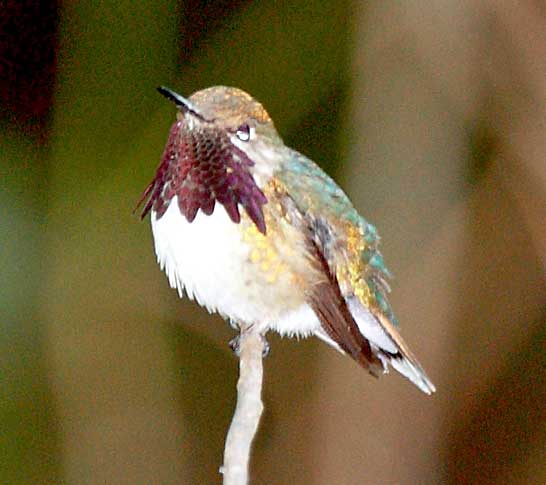 Nightingale Thrushes, Brown-backed and Slaty Solitaire, Blue Mockingbird and Gray-silky Flycatcher. After lunch in the town of Perote, we will continue with our elevation gain to an area called Cofre del Perote. This is an open pine habitat with small agricultural areas scattered at an elevation of 3000 meters. This area is home to birds such as Striped and Brewer’s Sparrow, Collared Towhee, Elegant Euphonia, and the endemic Strickland’s Woodpecker. We will aim for departing the area in the mid afternoon for our 3.5 hour drive to Tuxtepec, Oaxaca. Night in Tuxtepec, Oaxaca.
Nightingale Thrushes, Brown-backed and Slaty Solitaire, Blue Mockingbird and Gray-silky Flycatcher. After lunch in the town of Perote, we will continue with our elevation gain to an area called Cofre del Perote. This is an open pine habitat with small agricultural areas scattered at an elevation of 3000 meters. This area is home to birds such as Striped and Brewer’s Sparrow, Collared Towhee, Elegant Euphonia, and the endemic Strickland’s Woodpecker. We will aim for departing the area in the mid afternoon for our 3.5 hour drive to Tuxtepec, Oaxaca. Night in Tuxtepec, Oaxaca.
Day 4 Tuxpec - 24th April
Tuxtepec is a very busy and industrious city that awakes nearly as early as birders! It is also home to the largest Modelo Brewery in Mexico so the possibility of fresh beer is always quite good. Our prime birding area in the foothills requires a 4:30am departure and one hour of driving to get to the lower elevation cloud forest above the town of Valle Nacional. We will be looking for birds such as Wedge-tailed Sabrewing, Black-crested Coquette, Azure-crowned Hummingbird, Berylline Hummingbird, Canivet’s Emerald, White-bellied Emerald, Rufous-breasted Spinetail, White-bellied Wren, up to 25 species of warblers, Gartered Trogon, Passerini’s Tanager, Central American Pygmy Owl, Collared Forest-Falcon, and Slate-coloured Solitaire. After a picnic lunch we will return to the steamy lowlands and to the limestone karst hills close to Tuxtepec where we will find excellent habitat for the very range restricted Sumichrast’s Wren. If we were previously successful in with this wren, then we will take the afternoon to go even higher in elevation for birds like Uni-coloured, Dwarf, and Azure-hooded Jays, Emerald Toucanet, Black Thrush, Golden-browed Warbler and Cinnamon- bellied Flowerpiercer. Night in Tuxtepec, Oaxaca.
bellied Flowerpiercer. Night in Tuxtepec, Oaxaca.
Day 5 Oaxaca - 25th April
This morning we will pack up and depart at least as early as yesterday with our primary goal being the higher elevation pine and oak cloud forest once again above Valle Nacional. Some of the target birds will be Yellow-winged Tanager, Barred Parakeet, Emerald-chinned, Bumblebee, Amethyst-throated and Garnet-throated Hummingbirds, Slate-coloured Solitaire, White-naped Brush-finch, Uni-coloured and Azure-hooded Jay, Gray-barred Wren, Crested Guan and Blue-crowned Chlorophonia. After yet another scrumptious picnic lunch we will continue climbing in elevation and driving south over the mountains and into the ever dryer valleys on our way to Oaxaca city. Along the way we will stop in the pine forests for more chances at Gray-barred Wren, Dwarf Jay, Black Thrush, Mountain Trogon, Pine Flycatcher, Long-tailed Wood-partridge, Chestnut-sided Shrike-vireo, and Cinnamon-bellied Flowerpiercer. We will arrive in the beautiful city of Oaxaca in the evening. Night in Oaxaca City.
Day 6 Valley of Oaxaca – 26th April
The habitat in the Valley of Oaxaca is primarily upland scrub and weedy agricultural fields that tend to be incredibly birdy, indeed the valley holds a number of birds that are nearly endemic to the  valley alone! This morning’s outing will be to an area east of the city known as Teotitlan de Valle, an area of scrub thorn and oak habitat. Here we will be searching for endemics like Slaty, Golden and Dwarf Vireo, Lesser Roadrunner, Pileated Flycatcher Gray-breasted Woodpecker, Beautiful and Dusky Hummingbird, Boucard’s Wren, Ocellated Thrasher, White-throated Towhee, Bridled and Oaxaca Sparrow. As the day progresses we will work our way up in elevation to once again have chances for things like Uni-coloured and Dwarf Jay, Chestnut-sided Shrike-Vireo, Bumblebee Hummingbird and other higher elevation species mentioned on the previous day. Night in Oaxaca City.
valley alone! This morning’s outing will be to an area east of the city known as Teotitlan de Valle, an area of scrub thorn and oak habitat. Here we will be searching for endemics like Slaty, Golden and Dwarf Vireo, Lesser Roadrunner, Pileated Flycatcher Gray-breasted Woodpecker, Beautiful and Dusky Hummingbird, Boucard’s Wren, Ocellated Thrasher, White-throated Towhee, Bridled and Oaxaca Sparrow. As the day progresses we will work our way up in elevation to once again have chances for things like Uni-coloured and Dwarf Jay, Chestnut-sided Shrike-Vireo, Bumblebee Hummingbird and other higher elevation species mentioned on the previous day. Night in Oaxaca City.
Day 7 Oaxaca - Chiapas - 27th April
Today is basically a travel day from Oaxaca to the Isthmus of Tehuantepec, and on to Chiapas. We will have the morning to pick-up any missing birds from yesterday before we start our drive towards Chiapas and across the Isthmus of Tehuantepec, the narrowest portion of Mexico. Along the way we will stop for birds such as Green-fronted Hummingbird, Rufous-backed Thrush, Orange-fronted Parakeet, Cinnamon-tailed Sparrow, Orange-breasted Bunting, West Mexican Chachalaca and Citreoline Trogon. We will also be passing through one of the best places anywhere to actually see Lesser Ground-Cuckoo and Lesser Roadrunner! On our drive across the Isthmus, considered one of the windiest places on the planet, we may also see numerous species of raptors and double-striped Thick-knees in the roadside short grass fields. Night in Arriaga Chiapas
Day 8 Arriaga, Chiapas and the Sepulvera bio-sphere reserve - 28th April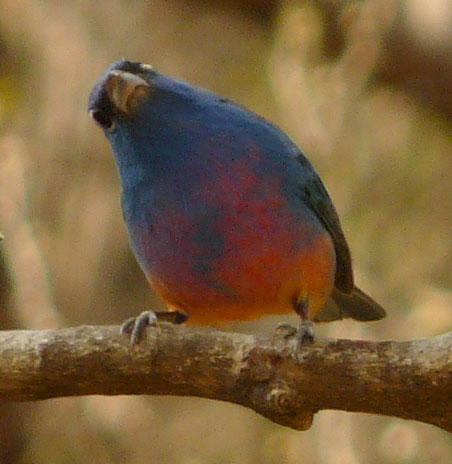 A short drive from our hotel puts us into the Sepulvera Bio-reserve and excellent habitat for the remarkably stunning and endemic Rosita’s Bunting. This area is also home to Orange-breasted, Blue, Indigo and Painted Buntings making for the possibility for a true spectacular day! Other neat birds include West Mexican Chachalaca, Green and Pacific Parakeets, Russet-crowned Motmot, Citreoline Trogon, Long-tailed Manakin and Yellow-winged Cacique. We will have a lunch back in town before heading east and toward the village of Boca del Cielo and prime lowland habitat for Giant Wren and White-bellied Chachalaca. The late afternoon will include a 2.5 hour drive to the capital of Chiapas, Tuxtla Gutierrez. Night in Tuxtla Gutierrez, Chiapas.
A short drive from our hotel puts us into the Sepulvera Bio-reserve and excellent habitat for the remarkably stunning and endemic Rosita’s Bunting. This area is also home to Orange-breasted, Blue, Indigo and Painted Buntings making for the possibility for a true spectacular day! Other neat birds include West Mexican Chachalaca, Green and Pacific Parakeets, Russet-crowned Motmot, Citreoline Trogon, Long-tailed Manakin and Yellow-winged Cacique. We will have a lunch back in town before heading east and toward the village of Boca del Cielo and prime lowland habitat for Giant Wren and White-bellied Chachalaca. The late afternoon will include a 2.5 hour drive to the capital of Chiapas, Tuxtla Gutierrez. Night in Tuxtla Gutierrez, Chiapas.
Day 9 Canyon El Sumidero National Park, Chiapas – 29th April
This morning we will start out early for Canyon Sumidero a fantastic geological feature and 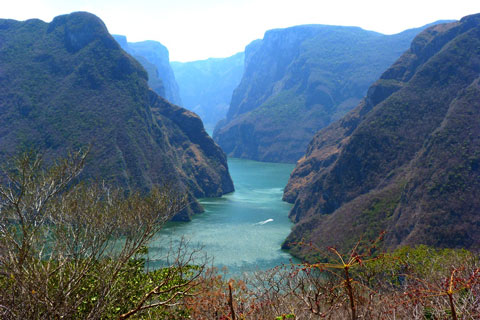 Mexico’s answer to the Grand Canyon with a vertical drop of over 3500 feet to the river below! Canyon Sumidero provides an excellent array of interesting and unique habitats ranging from cut over agricultural fields to a dry fog forest at the top and the canyon rim. Our long list of target species includes; Highland Guan, Thicket Tinamou, Maroon-chested Ground-dove, Lesser Roadrunner, Lesser Ground Cuckoo, Great Swallow-tailed Swift, Singing Quail, Plain-capped Starthroat, Slender Sheartail, Belted Flycatcher, Flammulated Flycatcher, Gray-collared Becard, Fan-tailed Warbler, Red-breasted Chat, Black-vented and Bar-winged Oriole. Night in Tuxtla Gutierrez, Chiapas.
Mexico’s answer to the Grand Canyon with a vertical drop of over 3500 feet to the river below! Canyon Sumidero provides an excellent array of interesting and unique habitats ranging from cut over agricultural fields to a dry fog forest at the top and the canyon rim. Our long list of target species includes; Highland Guan, Thicket Tinamou, Maroon-chested Ground-dove, Lesser Roadrunner, Lesser Ground Cuckoo, Great Swallow-tailed Swift, Singing Quail, Plain-capped Starthroat, Slender Sheartail, Belted Flycatcher, Flammulated Flycatcher, Gray-collared Becard, Fan-tailed Warbler, Red-breasted Chat, Black-vented and Bar-winged Oriole. Night in Tuxtla Gutierrez, Chiapas.
Day 10 El Ocote Reserve, Chiapas – 30th April
This morning we will drive one hour to the federal reserve of Ocote and an excellent patch of humid tropical forest. Here we will look for Yellow-headed Parrot, Slaty-breasted and Thicket Tinamou’s, Long-tailed Sabrewing, Wedge-tailed Sabrewing, Stub-tailed Spadebill, Nightingale and Nava’s Wren, and Green Shrike-Vireo. We will then drive back towards Tuxtla for lunch before making our way to the pine forests surrounding Sa Cristobal de Las Casa’s. We will have time in 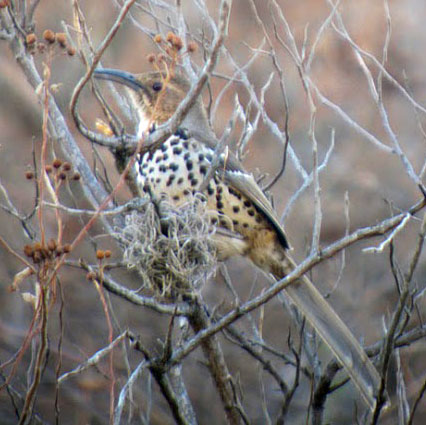 the afternoon to look for Rufous-browed Wren, Ocellated Quail, Mountain Trogon, Blue-throated Motmot, Black-throated Jay, Rufous-collared Robin, Blue-and-White Mockingbird and White-naped Brush Finch. This evening we will spend the night in San Cristobal de Las Casa’s Chiapas
the afternoon to look for Rufous-browed Wren, Ocellated Quail, Mountain Trogon, Blue-throated Motmot, Black-throated Jay, Rufous-collared Robin, Blue-and-White Mockingbird and White-naped Brush Finch. This evening we will spend the night in San Cristobal de Las Casa’s Chiapas
Day 11 San Cristobal de Las Casa’s Chiapas – 1st May
The town of San Cristobal is probably more recently known for a rather extended state of unrest that occurred in the mid 1990’s when in fact the city of San Cristobal was taken over by “rebel” forces comprised of local indigenous that were looking or land reform. Today San Cristobal is one of the most tranquil destinations in Mexico as well as one of the most beautiful colonial cities. We will have a full day to find a number of special birds in the pine and oak forest habitat surrounding San Cristobal, including all of the birds on yesterday’s afternoon list. Other possibilities include night birds such as the Unspotted Saw-whet Owl, Bearded Screech Owl, Fulvous Owl and Mexican Whip-poor-will. This is also a great place to find Pink-headed Warbler, as well as a number of other interesting northern Warblers including Golden-cheeked. Night in Comitan Chiapas
Day 12 Comitan, Chiapas - Lagos Montebello – 2nd May Our first stop today will be at the Mayan Ruins of Temon Puente where we will spend a little time looking for Belted Flycatcher before heading over to Lagos de Monte Bello. Lago’s de Montebello is one of the only easily accessible areas of cloud forest left in Mexico. Here we will search for Highland Guan, White-faced Quail-Dove, White-eared, Emerald-chinned and Garnet-throated Hummingbirds, Green-throated Mountain Gem, Black-crested Coquette, Sparkling-tailed and Wine-throated Hummingbirds which are all possible here as well as Black-throated and Uni-coloured Jay’s, Golden-browed Warbler, Slate-coloured Solitaire, Speckled Mourner, Blue-crowned Chlorophonia, Prevost’s Ground-sparrow, Black Thrush, Black-faced (Mexican) Antthrush, Eared Quetzal, and Black-headed Siskin. We’ll spend the Night back in Comitan, Chiapas
Our first stop today will be at the Mayan Ruins of Temon Puente where we will spend a little time looking for Belted Flycatcher before heading over to Lagos de Monte Bello. Lago’s de Montebello is one of the only easily accessible areas of cloud forest left in Mexico. Here we will search for Highland Guan, White-faced Quail-Dove, White-eared, Emerald-chinned and Garnet-throated Hummingbirds, Green-throated Mountain Gem, Black-crested Coquette, Sparkling-tailed and Wine-throated Hummingbirds which are all possible here as well as Black-throated and Uni-coloured Jay’s, Golden-browed Warbler, Slate-coloured Solitaire, Speckled Mourner, Blue-crowned Chlorophonia, Prevost’s Ground-sparrow, Black Thrush, Black-faced (Mexican) Antthrush, Eared Quetzal, and Black-headed Siskin. We’ll spend the Night back in Comitan, Chiapas
Day 13 Las Guaycamayas – 3rd May
We will have a second morning to look for all of the above species before making our way down slope and towards the tropical lowlands of the Usumacinta river valley, the river that defines the border between Mexico and Guatemala. In fact we will be spending the following three days birding on or near this major river with the possibility of a fantastic array of birds. Our first stop will be at the very comfortable nature lodge at Las Guaycamayas where we will spend the night and do a boat trip. The drive to Guaycamayas from Lagos is incredibly scenic and the bird species begin to look more like those found in Central America and can include Slaty-breasted, Little and Thicket Tinamou, King Vulture, Gray-headed, Hook-billed, White-tailed, Plumbeous, Double-toothed, Mississippi and Swallow-tailed Kites, Great Curassow, Spotted Wood-Quail, Ruddy and Blue Ground Dove, Mealy Parrot, Wedge-tailed 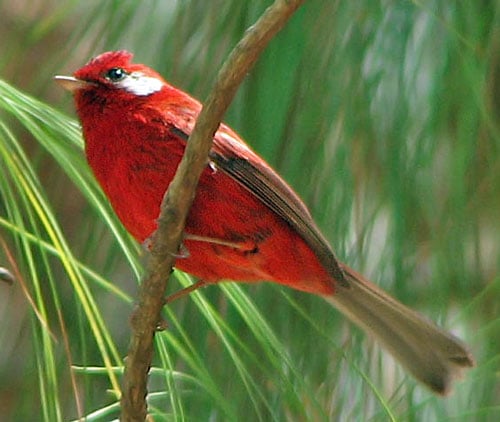 Sabrewing, Northern Royal Flycatcher, Stub-tailed Spadebill, Spot-breasted Wren, Green-Shrike Vireo, Black-throated Shrike-Tanager and Green-backed Sparrow. Guaycamayas is the most reliable location in Mexico to see wild Scarlet Macaws as well as all the species mentioned above and a lot more! Night in Las Guacamayas, Chiapas
Sabrewing, Northern Royal Flycatcher, Stub-tailed Spadebill, Spot-breasted Wren, Green-Shrike Vireo, Black-throated Shrike-Tanager and Green-backed Sparrow. Guaycamayas is the most reliable location in Mexico to see wild Scarlet Macaws as well as all the species mentioned above and a lot more! Night in Las Guacamayas, Chiapas
Day 14 Rio Chajul – 4th May
After breakfast we will do a three hour boat trip on the Rio Chajul. There are a lot of possible birds in the area including everything mentioned for yesterday plus White Hawk, Collared Plover, Pale-Vented, Scaled and Short-billed Pigeon, Gray-headed Dove and Ruddy-Quail-Dove. We will night in Fronterra Corazal
Day 15 Yaxchilan - Palenque – 5th May
This morning we will depart at 4:30am for a boat trip to the Yaxchilan ruins on the Usumacinta River, the 1 hour trip from the boat launch site to the ruins is an incredible and memorable experience. We time the trip to arrive at the beginning of a deafening dawn song of birds and to beat all of the tourists that will be arriving from Palenque later in the morning. We have an “arrangement” with the guards at the ruin to let us in early, long before any other people will get there, it is a truly magical e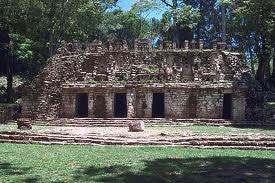 xperience to be in this only partially excavated Mayan site with no one around except your fellow travelers. Once again most of the bird possibilities are the same as the previous day, with the addition of things like Gray-headed Dove, Spotted Wood-Quail, Central-American Pygmy Owl, Slaty-tailed, Collared and Gartered Trogon, Stub-tailed Spadebill, Speckled Mourner, and the superb Lovely Cotinga. After returning to Fronterra Corizal we’ll have lunch and pack up for the 2 hour drive to Palenque with a few birding stops along the way. The birding right on the hotel grounds can be pretty good with lots of Tanagers staging migrants and night birds! Night in Palenque at the Chan Kah hotel
xperience to be in this only partially excavated Mayan site with no one around except your fellow travelers. Once again most of the bird possibilities are the same as the previous day, with the addition of things like Gray-headed Dove, Spotted Wood-Quail, Central-American Pygmy Owl, Slaty-tailed, Collared and Gartered Trogon, Stub-tailed Spadebill, Speckled Mourner, and the superb Lovely Cotinga. After returning to Fronterra Corizal we’ll have lunch and pack up for the 2 hour drive to Palenque with a few birding stops along the way. The birding right on the hotel grounds can be pretty good with lots of Tanagers staging migrants and night birds! Night in Palenque at the Chan Kah hotel
Day 16 Palenque and the Usumacinta marshes – 6th May
This morning we will visit what is considered quite possibly the most incredible Mayan ruin in 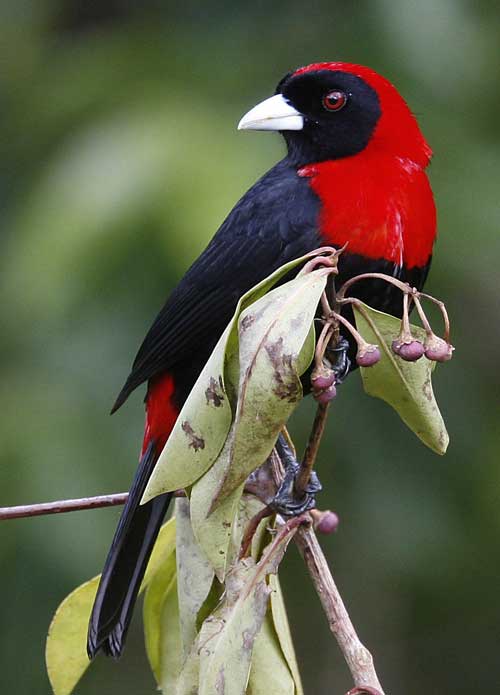 Mexico if not the entire Mayan world. The ruin does not open until 8am so we will be passing the early morning hours birding the interesting trails just outside of the site proper before it opens. Today we may encounter Great and Slaty-breasted Tinamou, Gray-headed and Gray-Chested Doves, White Hawk, Black Hawk-Eagle, Central American Pygmy Owl, Wedge-tailed and Violet Sabrewing, White-necked Jacobin, four Trogons, three Toucans, Great Antshrike, Scaled Antpitta, Northern Royal and Sulphur-rumped Flycatcher, White-collared and Red-capped Manakin, Green Shrike-Vireo, Black-Throated Shrike-Tanager, Golden-hooded, Passerini’s and Crimson-collared Tanagers, Green Honeycreeper, and Orange-billed and Green-backed Sparrows. When birding slows down we will head back to the hotel for lunch before departing for an afternoon trip to an area known as the Usumacinta marshes. This is an extensive area of wetlands and agricultural areas that are excellent for Aplomado Falcon, Black-collared Hawk, Yellow-headed Parrot, Double-striped Thick-knee, Pinnated and American Bittern, Glossy Ibis, Masked Duck, Plain-breasted Ground-Dove, Fork-tailed Flycatcher, Rufous-breasted Spinetail, Yucatan Jay and Grassland Yellow-Finch. We will spend the Night in Palenque at the Chan Kah hotel
Mexico if not the entire Mayan world. The ruin does not open until 8am so we will be passing the early morning hours birding the interesting trails just outside of the site proper before it opens. Today we may encounter Great and Slaty-breasted Tinamou, Gray-headed and Gray-Chested Doves, White Hawk, Black Hawk-Eagle, Central American Pygmy Owl, Wedge-tailed and Violet Sabrewing, White-necked Jacobin, four Trogons, three Toucans, Great Antshrike, Scaled Antpitta, Northern Royal and Sulphur-rumped Flycatcher, White-collared and Red-capped Manakin, Green Shrike-Vireo, Black-Throated Shrike-Tanager, Golden-hooded, Passerini’s and Crimson-collared Tanagers, Green Honeycreeper, and Orange-billed and Green-backed Sparrows. When birding slows down we will head back to the hotel for lunch before departing for an afternoon trip to an area known as the Usumacinta marshes. This is an extensive area of wetlands and agricultural areas that are excellent for Aplomado Falcon, Black-collared Hawk, Yellow-headed Parrot, Double-striped Thick-knee, Pinnated and American Bittern, Glossy Ibis, Masked Duck, Plain-breasted Ground-Dove, Fork-tailed Flycatcher, Rufous-breasted Spinetail, Yucatan Jay and Grassland Yellow-Finch. We will spend the Night in Palenque at the Chan Kah hotel
Day 17 Palenque and the Usumacinta marshes – 7th May
Depending on flight times we may have time for a little birding before taking our international return flights out of Villa Hermosa, Tabasco where this tour concludes
Airfare: £750.00 - £950.00(Approx) - UK/UK
Zoothera tour prices explained

Group size: Minimum for tour to go ahead 8 with maximum 10.
Included in cost: Accommodation in twin rooms en-suite, all meals, ground transport throughout, boat trip, all entrance fees, and services of leaders. Red-faced-Warbler by Steve Bird
Not included: Airfare's, insurance, drinks, tips, and items of a personal nature.
Accommodation: All lodges are of a good standard and offer en-suite rooms, a good variety of meals and cooked breakfasts.
Tour Code: This is a standard birding tour with regular birding walks along roads and well marked trails. There are early morning options and pre-breakfast excursions, followed by morning and afternoon sessions. The weather is generally good to warm, even hot with possibilities of rain in the afternoons. Be prepared for all eventualities.
Receive our e-newsletter: Join the Zoothera e-mailing list for up-to-date news on new tours, tour reports and special offers. Click Here to sign up
e-mail [email protected] to sign up.
Recommended Books, CD's and more from NHBS. Click on - Buy from NHBS - to go straight to website!
